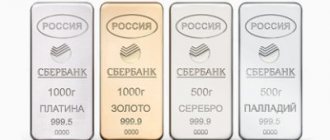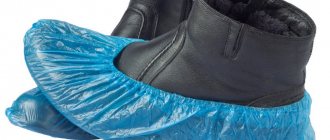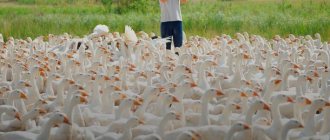The most popular confectionery product that Russians buy for tea is cookies.
Most consumers in our country buy it regularly, both spontaneously, grabbing it on the way to the checkout, and planning the purchase in advance, before going to the supermarket.
The production of various types of cookies in our country totals more than 900 tons per year, and market demand not only remains at a high level, but is also growing steadily - by 8-10% annually. Of course, there is a lot of competition here, because the business is profitable.
Moreover, both large confectionery factories and small manufacturers coexist at the same time, which in this specific segment can successfully compete for the tastes and loyalty of consumers. Today, the confectionery niche is almost completely filled, but there is still room in it for new players, whose products, with a competent approach and high quality, can take their place on the grocery store shelf, and then a place on the table of the end consumer. We will try to tell you in this article how to organize your own production of cookies, which can win a share of the confectionery counter.
Basic steps for organizing a mini-workshop for making cookies
Unlike a number of other products, where it is not easy for small companies to compete with market giants, in the confectionery business, in particular in the production of cookies, success can quickly come to small-scale production. The most important thing here is quality, taste, assortment and the presence of that very zest that will attract the consumer’s attention to the product.
Therefore, feel free to count on the fact that your own mini-workshop for the production of cookies can easily turn into a successful, profitable and profitable business. However, despite such bright prospects, you will have to work hard to be able to express yourself from the best side. To do this, you first need to draw up a business plan, which will reflect and carefully consider the following points:
- type and range of products;
- cookie production technology, stages;
- equipment (what, in what quantity);
- room for organizing a workshop;
- sales of production products (channels);
- calculation of costs and expected profits.
All these issues are significant, and it is their correct solution that affects the final result - the quality of the finished cookies, the presence of demand and, as a result, profit.
Production room
Workshop for the production of cookies
When preparing the premises, you should take into account the total length of the production line, as well as additional equipment - sinks, tables, refrigerators. A workshop of less than 100 m2 will be cramped; in addition, a warehouse for raw materials and finished products, an office space, and household rooms should be prepared. In the production workshop, it is necessary to ensure sanitary and hygienic conditions that meet all the requirements for safe production. To service an automated mini-line for the production of cookies, you will need three-phase sockets with voltages of 380 and 220 V, water supply, sewage, and ventilation. The workshop must be heated; it is better to use an air conditioning system.
We determine the assortment of our workshop
There are many types of cookies. Depending on the technology, as well as the composition (sugar and fat content), dough of different properties can be obtained. Especially popular are butter cookies, from which a variety of cookies are produced: shortbread, which is sweeter and fattier, and shortbread, which is less fatty and plastic.
As a result, you will have a very wide assortment (sugar, puff pastry, crackers and biscuits, etc.), which can be further diversified in shape, size, finishing, various fillings and additives. You can determine what type of product to offer to consumers by surveying the buyers themselves and analyzing the market and competitors in your region.
See what others are doing and do something new. Or old, but in a new interpretation - with unexpected fillings, combinations, other forms and original presentation. If the consumer notices and appreciates your cookies, then you hold the trump card.
Workshop organization
To create large-scale production, you will need appropriate premises. Since the production is food production, all sanitary rules and regulations must be observed. Convenient access roads must be laid to the building, and it must also be equipped with sewerage and an uninterrupted supply of electricity and water.
The machine forms the cookies, then they are baked, cooled and, at the last stage, packaged
Modern technologies make it possible to put the production of cookies on stream using an automated line. The minimum price for such a line is from 3,000,000 rubles. This is quite a significant investment for starting a business. But there is a way out - you can purchase used equipment, it is much cheaper. Or start with simpler devices, replacing some production processes with manual labor. And when you have developed a sufficient customer base, you can modernize the workshop.
Video: complete cookie production process
According to statistics, the market in our country is characterized by a small but stable annual increase in the production and sale of cookies. Over several years, the market volume has increased by more than 15%. According to surveys, consumers like oatmeal (18.6%) and sugar (18.3%) cookies the most. Following them are dry cookies, crackers and kurabyo. If you focus your production on these types of cookies, you will not miss. But be sure to add something of your own to compete with well-known brands.
The biggest problem for popular manufacturers is working on outdated equipment. In addition, delivery to all regions is not possible; in remote areas, the final price of the product may be too high for the consumer. This is where local mini-productions come into the picture. And if you start working on modern equipment with a competent marketing strategy, you will certainly be able to find your niche in the market.
To get started you will need:
- dough mixer for making dough, it comes in two types: with a jacket for cooling and heating the dough mass and without it;
- molding machine (if you have a mini-workshop, you can do it with manual labor);
- equipment for processing the top of cookies (glazing, if necessary);
- baking oven;
- equipment for packaging (you can hire workers for this);
- refrigerators for storing raw materials and finished products;
- flour sifter - used in the confectionery industry to remove all harmful and foreign impurities from flour (price from 25,000 rubles);
- glazing machine - applies glaze to finished cookies. It is also possible to apply it to curd cheeses and sweets (equipment price from 50,000 rubles);
- Jigging machine for forming products - the price starts from 110,000 rubles;
- rack oven for baking confectionery products - a high-quality oven costs from 130,000 rubles;
- dough mixer - this equipment costs from 127,000 rubles;
- horizontal packaging machine - the price for such machines starts from 380,000 rubles.
The area of the production premises must be from 200 sq. m. m. This area houses not only a production workshop, but also warehouses for storing the necessary raw materials and finished products, a staff room, and a bathroom. An office can also be located there. Also make sure that the production area is equipped with heat supply and ventilation.
Photo gallery: equipment for a confectionery shop
The glazing machine, thanks to various attachments, can apply glaze in patterns.
Flour sifter enriches flour with oxygen
The depositor can use shortbread, yeast and curd dough
The furnace has three autonomous compartments, with separate heating of the hearth and roof
A dough mixer is used to mix ingredients
Packaging machines vary depending on the container in which the product is packaged
Technology and production stages
Regardless of what type of cookies you make and what their recipe is, all the basic steps are almost the same. How is the production of cookies carried out? The stages of this process can be divided into the following:
- preparation of raw materials;
- kneading and forming dough;
- baking and cooling;
- package.
As a rule, the following ingredients are used to prepare the dough: premium flour, sugar, fats, egg powder, melange, baking powder, flavorings and various additives. Depending on the type of product, nuts, dried fruits, poppy seeds and sesame seeds, jams, condensed milk, etc. can be used. You will determine the need for certain components together with the technologist, developing an assortment and choosing a recipe for each type of cookie.
RECIPE
Confectionery recipes
In this section we publish basic traditional recipes
for the most popular types
of confectionery:
marshmallows, marshmallows, sweets, marmalade, oriental sweets, cookies, soufflés, gingerbreads. Food industry enterprises usually use ready-made recipes to write their own technical documentation for the production of various types of sugar, flour and other confectionery products.
Taking time-tested unified confectionery recipes as a basis, manufacturers usually make some changes to them. For example, they replace the proposed raw materials with more efficient and modern ones, introduce new dyes or flavors, thereby ensuring a diversified assortment and improving the product characteristics. At the same time, violation of sanitary standards and confectionery production technology regimes is not allowed, as this entails a decrease in the consumer properties of the final product.
"Jelly" Candies
Chocolate coated candies. Shape: rectangular oblong. Body: fruity jelly, with blackcurrant flavor, with the addition of alcohol and cognac. The candies are wrapped.
In 1 kilogram: at least 65 pieces. Humidity 16.6 ±2.5%.
| name of raw materials | Mass fraction of dry substances, % | Raw material consumption, kg | |||
| by sum of phases | total consumption per 1 ton of unwrapped products | ||||
| actually | in dry matter | actually | in dry matter | ||
| Chocolate glaze | 99,10 | 301,50 | 298,79 | 304,20 | 301,50 |
| Granulated sugar | 99,85 | 469,64 | 468,94 | 473,90 | 473,20 |
| Syrup | 78,00 | 20,18 | 15,74 | 20,40 | 15,90 |
| Blackcurrant poaching | 69,00 | 51,43 | 35,49 | 51,90 | 35,80 |
| Agaroid | 85,00 | 27,49 | 23,37 | 27,80 | 23,60 |
| Alcohol | — | 15,18 | — | 15,30 | — |
| Cognac | — | 7,64 | — | 7,70 | — |
| Lemon acid | 98,00 | 10,14 | 9,94 | 10,20 | 10,00 |
| Blackcurrant essence | — | 2,01 | — | 2,00 | — |
| Total | — | 905,21 | 852,27 | 913,40 | 860,00 |
| Exit | 83,42 | 1000,00 | 834,20 | 1000,00 | 834,20 |
"Volga-Volga"
Candies
Chocolate coated candies. Shape: rectangular oblong. Body: fruity jelly, with citrus aroma. The candies are wrapped.
In 1 kilogram: at least 65 pieces. Humidity 13.7% ±2.5%
| name of raw materials | Mass fraction of dry substances, % | Raw material consumption, kg | |||
| by sum of phases | total consumption per 1 ton of unwrapped products | ||||
| actually | in dry matter | actually | in dry matter | ||
| Chocolate glaze | 99,10 | 251,27 | 249,01 | 253,00 | 250,70 |
| Granulated sugar | 99,85 | 452,35 | 451,67 | 455,40 | 454,70 |
| Syrup | 78,00 | 181,42 | 141,51 | 182,70 | 142,50 |
| Applesauce | 10,00 | 188,98 | 18,90 | 190,00 | 19,00 |
| Agar | 85,00 | 7,56 | 6,43 | 7,60 | 6,50 |
| Lemon acid | 98,00 | 12,48 | 12,23 | 12,50 | 12,30 |
| Citrus essence | — | 1,51 | — | 1,50 | — |
| Dye | — | 0,30 | — | 0,30 | — |
| Total | — | 1095,87 | 879,75 | 1103,00 | 885,70 |
| Exit | 86,28 | 1000,00 | 862,80 | 1000,00 | 862,80 |
"Isabel"
Marmalade
The shape of the products is small figures of various shapes, sprinkled with granulated sugar. The marmalade is lilac in color and has the taste and aroma of Isabella grapes.
Available in weights and packaged. There are at least 60 pieces in 1 kilogram. Humidity 21% (+1%; - 2%).
| name of raw materials | Mass fraction of dry substances, % | Consumption of raw materials, per 1 ton of finished products, kg | |
| actually | in dry matter | ||
| Granulated sugar for sprinkling | 99,85 | 86,60 | 86,50 |
| Granulated sugar in jelly | 99,85 | 607,00 | 606,10 |
| Grape puree | 10,00 | 936,00 | 93,60 |
| Beet pectin | 86,00 | 22,00 | 18,90 |
| Lemon acid | 98,00 | 1,00 | 1,00 |
| Total | — | 1652,60 | 806,10 |
| Exit | 79,00 | 1000,00 | 790,00 |
"White-pink"
Marshmallow
Shape: round or oblong, with a grooved surface. Glued from two halves.
The surface is sprinkled with powdered sugar. Marshmallows are produced by weight and packaged, in an equal mix of white and pink varieties.
Humidity: 17.00% (+3%; - 1%). 1 kilogram contains at least 24 pieces.
| name of raw materials | Mass fraction of dry substances, % | Raw material consumption, kg | |||
| per 1 ton of phase | per 1 ton of finished products | ||||
| actually | in dry matter | actually | in dry matter | ||
| Recipe for ready-made marshmallows from semi-finished products per 1 ton | |||||
| Marshmallows without powdered sugar | 80,00 | 1006,13 | 804,90 | 1006,13 | 804,90 |
| Powdered sugar | 99,85 | 29,75 | 29,70 | 29,75 | 29,70 |
| Total | — | 1035,88 | 834,60 | 1035,88 | 834,60 |
| Exit | 83,00 | 1000,00 | 830,00 | 1000,00 | 830,00 |
| Semi-finished product recipe - marshmallows without powdered sugar for 1006.13 kg | |||||
| Granulated sugar | 99,85 | 318,36 | 317,88 | 320,31 | 319,83 |
| Applesauce | 10,00 | 294,50 | 29,45 | 296,30 | 29,63 |
| Apple pectin | 92,00 | 13,28 | 12,22 | 13,36 | 12,29 |
| Egg white | 12,00 | 64,25 | 7,71 | 64,64 | 7,76 |
| Sugar syrup | 85,00 | 531,15 | 451,48 | 534,40 | 454,24 |
| Lactic acid | 40,00 | 8,25 | 3,30 | 8,30 | 3,32 |
| Sodium lactate | 40,00 | 6,75 | 2,70 | 6,79 | 2,72 |
| Vanilla essence | — | 1,00 | — | 1,00 | — |
| Fruit and berry essence | — | 1,00 | — | 1,00 | — |
| Red dye | — | 0,60 | — | 0,60 | — |
| Total | — | 1239,14 | 824,74 | 1246,70 | 829,79 |
| Exit | 80,00 | 1000,00 | 800,00 | 1006,13 | 804,90 |
| Humidity 20% (+3.0;-1.0%) | |||||
| Semi-finished product recipe - sugar syrup for 534.4 kg | |||||
| Granulated sugar | 99,85 | 650,86 | 649,88 | 347,82 | 347,30 |
| Syrup | 78,00 | 266,46 | 207,84 | 142,40 | 111,07 |
| Total | — | 917,32 | 857,72 | 490,22 | 458,37 |
| Exit | 85,00 | 1000,00 | 850,00 | 534,40 | 454,24 |
| Summary recipe | |||||
| Granulated sugar | 99,85 | 668,13 | 667,13 | 671,00 | 670,00 |
| Powdered sugar | 99,85 | 29,75 | 29,70 | 29,90 | 29,80 |
| Syrup | 78,00 | 142,40 | 111,07 | 142,90 | 111,50 |
| Applesauce | 10,00 | 296,30 | 29,63 | 298,00 | 29,80 |
| Egg white | 12,00 | 64,64 | 7,76 | 65,00 | 7,80 |
| Apple pectin | 92,00 | 13,36 | 12,29 | 13,40 | 12,30 |
| Lactic acid | 40,00 | 8,30 | 3,32 | 8,40 | 3,40 |
| Sodium lactate | 40,00 | 6,79 | 2,72 | 6,80 | 2,70 |
| Vanilla essence | — | 1,00 | — | 1,00 | — |
| Fruit and berry essence | — | 1,00 | — | 1,00 | — |
| Red dye | — | 0,60 | — | 0,60 | — |
| Total | — | 1232,27 | 863,62 | 1238,10 | 867,30 |
| Exit | 83,00 | 1000,00 | 830,00 | 1000,00 | 830,00 |
"Squirrel"
Candies
Chocolate coated candies. Shape: rectangular oblong.
Body: chocolate hazelnut praline with roasted chopped hazelnuts. The candies are wrapped.
There are at least 65 pieces in 1 kilogram. Humidity - 1%±0.3%.
| name of raw materials | Mass fraction of dry substances, % | Raw material consumption, kg | |||
| per 1 ton of phase | per 1 ton of finished products | ||||
| actually | in dry matter | actually | in dry matter | ||
| Frame | 98,95 | 703,57 | 696,18 | 703,57 | 696,18 |
| Chocolate glaze | 99,10 | 301,50 | 298,79 | 301,50 | 298,79 |
| Total | — | 1005,07 | 994,97 | 1005,07 | 994,97 |
| Exit | 99,00 | 1000,00 | 990,00 | 1000,00 | 990,00 |
| Housing recipe (Humidity 1 ±0.3%) | |||||
| by 703.57 kg. | |||||
| Praline | 99,00 | 952,44 | 942,92 | 670,11 | 663,41 |
| Hazelnut kernel | 97,50 | 53,90 | 52,55 | 37,92 | 36,97 |
| Vanillin | — | 0,15 | — | 0,11 | — |
| Total | — | 1006,49 | 995,47 | 708,14 | 700,38 |
| Exit | 98,95 | 1000,00 | 989,50 | 703,57 | 696,18 |
| Praline recipe | |||||
| by 670.11 kg. | |||||
| Powdered sugar | 99,85 | 468,31 | 467,61 | 313,82 | 313,35 |
| Roasted crushed hazelnut kernel | 97,50 | 418,17 | 407,72 | 280,22 | 273,21 |
| Cocoa liquor | 97,40 | 93,28 | 90,85 | 62,51 | 60,88 |
| Cacao butter | 100,00 | 38,90 | 38,90 | 26,07 | 26,07 |
| Total | — | 1018,66 | 1005,08 | 682,62 | 673,51 |
| Exit | 99,00 | 1000,00 | 990,00 | 670,11 | 663,41 |
"Stratosphere"
Candies
Chocolate coated candies. Shape: rectangular oblong.
Body: fruit mass, whipped on proteins. with the addition of crushed almonds. The candies are wrapped.
There are at least 65 pieces in 1 kilogram. Humidity - 12.7% ± 2%.
| name of raw materials | Mass fraction of dry substances, % | Raw material consumption, kg | |||
| per 1 ton of phase | per 1 ton of finished products | ||||
| actually | in dry matter | actually | in dry matter | ||
| Frame | 81,0 | 653,27 | 529,15 | 653,27 | 529,15 |
| Chocolate glaze | 99,10 | 351,81 | 348,64 | 351,81 | 348,64 |
| Total | — | 1005,08 | 877,79 | 1005,08 | 877,79 |
| Exit | 87,34 | 1000,00 | 873,40 | 1000,00 | 873,40 |
| Housing recipe (Humidity 19% ± 2%) | |||||
| by 653.27 kg. | |||||
| Downed mass | 80,50 | 995,77 | 801,59 | 650,51 | 523,66 |
| Powdered sugar | 99,85 | 14,96 | 14,94 | 9,77 | 9,76 |
| Total | — | 1010,73 | 816,53 | 660,28 | 533,42 |
| Exit | 81,00 | 1000,00 | 810,00 | 653,27 | 529,15 |
| Mixed mass recipe | |||||
| by 650.51 kg. | |||||
| Agar syrup | 83,00 | 617,87 | 512,83 | 401,93 | 333,60 |
| Fruit mass | 75,00 | 364,59 | 273,44 | 237,17 | 177,88 |
| Egg white | 12,00 | 34,42 | 4,12 | 22,39 | 2,69 |
| Almond or hazelnut kernel, crushed | 97,50 | 27,53 | 26,84 | 17,91 | 17,46 |
| Rum essence | — | 2,45 | — | 1,59 | — |
| Total | — | 1046,86 | 817,24 | 680,99 | 531,63 |
| Exit | 80,50 | 1000,00 | 505,00 | 650,51 | 523,66 |
| Agar syrup recipe | |||||
| by 401.93 kg. | |||||
| Granulated sugar | 99,85 | 591,72 | 590,83 | 237,83 | 237,47 |
| Syrup | 78,00 | 295,86 | 230,77 | 118,92 | 92,76 |
| Agar | 85,00 | 14,79 | 12,57 | 5,94 | 5,05 |
| Total | — | 902,37 | 834,17 | 362,69 | 335,28 |
| Exit | 83,00 | 1000,00 | 830,00 | 401,93 | 333,60 |
| Fruit mass recipe | |||||
| by 237.17 kg. | |||||
| Granulated sugar | 99,85 | 688,95 | 687,92 | 163,40 | 163,15 |
| Apricot puree | 10,00 | 688,95 | 68,89 | 163,40 | 16,34 |
| Total | — | 1377,90 | 756,81 | 326,80 | 179,49 |
| Exit | 75,00 | 1000,00 | 750,00 | 237,17 | 177,88 |
"Garden Strawberry"
Candies
Chocolate coated candies. Shape: rectangular oblong or oval.
Body: jelly-fruit mass, whipped on proteins. The candies are wrapped.
There are at least 80 pieces in 1 kilogram. Humidity - 15% ± 2%.
| name of raw materials | Mass fraction of dry substances, % | Raw material consumption, kg | |||
| per 1 ton of phase | per 1 ton of finished products | ||||
| actually | in dry matter | actually | in dry matter | ||
| Frame | 79,00 | 703,52 | 555,78 | 703,52 | 555,78 |
| Chocolate glaze | 99,10 | 301,50 | 298,79 | 301,50 | 298,79 |
| Total | — | 1005,00 | 854,57 | 1005,02 | 854,57 |
| Exit | 85,03 | 1000,00 | 850,30 | 1000,00 | 850,30 |
| Body Recipe (Humidity 21% ± 2%) | |||||
| by 703.52 kg. | |||||
| Granulated sugar | 99,85 | 435,40 | 434,75 | 306,31 | 305,85 |
| Syrup | 78,00 | 215,40 | 168,01 | 151,54 | 118,20 |
| Strawberry poaching | 69,00 | 230,00 | 158,70 | 161,81 | 111,65 |
| Strawberry puree | 10,00 | 169,30 | 16,93 | 119,11 | 11,91 |
| Egg white | 12,00 | 56,67 | 6,80 | 39,87 | 4,78 |
| Agar | 85,00 | 13,20 | 11,22 | 9,29 | 7,90 |
| Lactic acid | 40,00 | 13,80 | 5,52 | 9,71 | 3,88 |
| Strawberry essence | — | 2,50 | — | 1,75 | — |
| Total | — | 1136,27 | 801,93 | 799,40 | 564,17 |
| Exit | 79,00 | 1000,00 | 790,00 | 703,52 | 555,78 |
| Summary recipe | |||||
| Chocolate glaze | 99,10 | 301,50 | 298,79 | 306,00 | 303,20 |
| Granulated sugar | 99,85 | 306,31 | 305,85 | 310,90 | 310,40 |
| Syrup | 78,00 | 151,54 | 118,20 | 153,70 | 119,90 |
| Strawberry poaching | 69,00 | 161,81 | 111,65 | 164,20 | 113,30 |
| Strawberry puree | 10,00 | 119,11 | 11,91 | 121,00 | 12,10 |
| Egg white | 12,00 | 39,87 | 4,78 | 40,80 | 4,90 |
| Agar | 85,00 | 3,29 | 7,90 | 9,40 | 8,00 |
| Lactic acid | 40,00 | 9,71 | 3,88 | 9,80 | 3,90 |
| Strawberry essence | — | 1,76 | — | 1,80 | — |
| Total | — | 1100,90 | 862,96 | 1117,60 | 875,70 |
| Exit | 85,03 | 1000,00 | 850,30 | 1000,00 | 850,30 |
"White-pink"
Paste
Pastila with pectin. Shape: rectangular bars. The products are sprinkled with powdered sugar.
Pastille is produced by weight and packaged in a set of white and pink colors or in one variety.
Humidity: 15.00% (+3%; - 1%). 1 kilogram contains at least 60 pieces.
| name of raw materials | Mass fraction of dry substances, % | Raw material consumption, kg | |||
| per 1 ton of phase | per 1 ton of finished products | ||||
| actually | in dry matter | actually | in dry matter | ||
| Pastille recipe | |||||
| White or pink marshmallow without powder | 83,00 | 972,36 | 807,10 | 972,36 | 807,10 |
| Powdered sugar | 99,85 | 45,90 | 45,80 | 45,90 | 45,80 |
| Total | — | 1018,26 | 852,90 | 1018,26 | 852,90 |
| Exit | 85,00 | 1000,00 | 850,00 | 1000,00 | 850,00 |
| Recipe for the semi-finished product - pink marshmallow without powder for 972.36 kg | |||||
| Granulated sugar | 99,85 | 340,30 | 339,79 | 330,89 | 330,39 |
| Applesauce | 12,00 | 522,50 | 62,70 | 508,06 | 60,96 |
| Apple pectin | 92,00 | 15,40 | 14,17 | 14,97 | 13,77 |
| Sugar syrup | 85,00 | 511,20 | 434,52 | 497,07 | 422,50 |
| Egg white | 12,00 | 19,30 | 2,32 | 18,77 | 2,25 |
| Lactic acid | 20,00 | 8,00 | 3,20 | 7,78 | 3,11 |
| Sodium lactate | 40,00 | 6,50 | 2,60 | 6,32 | 2,53 |
| Vanilla essence | — | 0,60 | — | 0,60 | — |
| Fruit and berry essence | — | 0,60 | — | 0,60 | — |
| Red dye | — | 0,60 | — | 0,60 | — |
| Total | — | 1425,00 | 859,30 | 1385,66 | 835,51 |
| Exit | 85,00 | 1000,00 | 850,00 | 972,36 | 807,10 |
| Recipe for semi-finished product - sugar-treacle syrup for 497.07 kg | |||||
| Granulated sugar | 99,85 | 689,80 | 688,80 | 342,88 | 342,36 |
| Syrup | 78,00 | 216,20 | 168,60 | 107,46 | 83,82 |
| Total | — | 906,00 | 857,40 | 450,34 | 426,18 |
| Exit | 85,00 | 1000,00 | 850,00 | 497,07 | 422,50 |
| Summary recipe | |||||
| Granulated sugar | 99,85 | 673,77 | 672,75 | 676,20 | 675,20 |
| Powdered sugar | 99,85 | 45,90 | 45,80 | 46,10 | 46,00 |
| Syrup | 78,00 | 107,46 | 83,82 | 107,80 | 84,10 |
| Applesauce | 12,00 | 508,06 | 60,96 | 510,00 | 61,20 |
| Apple pectin | 92,00 | 14,97 | 13,77 | 15,00 | 13,80 |
| Egg white | 12,00 | 18,77 | 2,25 | 19,20 | 2,30 |
| Lactic acid | 40,00 | 7,78 | 3,11 | 7,80 | 3,10 |
| Sodium lactate | 40,00 | 6,32 | 2,53 | 6,30 | 2,50 |
| Vanilla essence | — | 0,60 | — | 0,60 | — |
| Fruit and berry essence | — | 0,60 | — | 0,60 | — |
| Red dye | — | 0,60 | — | 0,60 | — |
| Total | — | 1384,83 | 884,99 | 1390,20 | 888,20 |
| Exit | 85,00 | 1000,00 | 850,00 | 1000,00 | 850,00 |
"Belorusskaya"
Paste
Shape: rectangular bars. The products are sprinkled with powdered sugar. The body consists of three layers: the top and bottom are whipped, the middle is jelly with berries.
Pastila is produced by weight and packaged.
Humidity: 15.00% (+3%; - 1%). 1 kilogram contains at least 50 pieces.
| name of raw materials | Mass fraction of dry substances, % | Raw material consumption, kg | |||
| per 1 ton of phase | per 1 ton of finished products | ||||
| actually | in dry matter | actually | in dry matter | ||
| Pastille recipe | |||||
| Aerated layers | 83,00 | 752,11 | 624,25 | 752,11 | 624,25 |
| Jelly layer | 75,00 | 217,75 | 163,31 | 217,75 | 163,31 |
| Powdered sugar | 99,85 | 45,85 | 45,78 | 45,85 | 45,78 |
| Total | — | 1015,71 | 833,34 | 1015,71 | 833,34 |
| Exit | 83,00 | 1000,00 | 830,00 | 1000,00 | 830,00 |
| Semi-finished product recipe - aerated layers for 752.11 kg | |||||
| Granulated sugar | 99,85 | 483,47 | 482,74 | 363,62 | 363,07 |
| Applesauce | 10,00 | 627,30 | 62,73 | 471,80 | 47,18 |
| Agar syrup | 79,00 | 391,94 | 309,63 | 294,78 | 232,88 |
| Egg white | 12,00 | 23,92 | 2,87 | 18,00 | 2,16 |
| Lactic acid | 40,00 | 6,15 | 2,46 | 4,62 | 1,85 |
| Vanilla essence | — | 1,00 | — | 0,75 | — |
| Total | — | 1533,78 | 860,43 | 1153,57 | 647,14 |
| Exit | 83,00 | 1000,00 | 830,00 | 752,11 | 624,25 |
| Semi-finished product recipe - syrup with agar for 294.78 kg | |||||
| Granulated sugar | 99,85 | 564,45 | 563,60 | 166,39 | 166,14 |
| Syrup | 78,00 | 282,23 | 220,14 | 83,20 | 64,90 |
| Agar | 85,00 | 15,68 | 13,33 | 4,62 | 3,93 |
| Total | — | 862,36 | 797,07 | 254,21 | 234,97 |
| Exit | 79,00 | 1000,00 | 790,00 | 294,78 | 232,88 |
| Semi-finished product recipe - jelly layer for 217.75 kg | |||||
| Granulated sugar | 99,85 | 276,28 | 275,87 | 60,16 | 60,07 |
| Syrup | 78,00 | 133,38 | 104,04 | 29,04 | 22,65 |
| Strawberry or cranberry stock | 60,00 | 622,00 | 373,20 | 135,44 | 81,26 |
| Agar | 85,00 | 10,05 | 8,54 | 2,20 | 1,87 |
| Total | — | 1041,71 | 761,65 | 226,84 | 165,85 |
| Exit | 75,00 | 1000,00 | 750,00 | 217,75 | 163,31 |
| Summary recipe | |||||
| Granulated sugar | 99,85 | 590,17 | 589,28 | 594,60 | 593,70 |
| Powdered sugar | 99,85 | 45,85 | 45,78 | 46,20 | 46,10 |
| Syrup | 78,00 | 112,24 | 87,55 | 113,10 | 88,20 |
| Applesauce | 10,00 | 471,80 | 47,18 | 475,00 | 47,50 |
| Strawberry or cranberry stock | 60,00 | 135,44 | 81,26 | 136,50 | 81,90 |
| Egg white | 12,00 | 18,00 | 2,16 | 18,30 | 2,20 |
| Agar | 85,00 | 6,82 | 5,80 | 6,80 | 5,80 |
| Lactic acid | 40,00 | 4,62 | 1,85 | 4,70 | 1,90 |
| Vanilla essence | — | 0,75 | — | 0,80 | — |
| Total | — | 1385,69 | 860,86 | 1396,00 | 867,30 |
| Exit | 83,00 | 1000,00 | 830,00 | 1000,00 | 830,00 |
"Blackcurrant"
Paste
Shape: small rectangular bars. The products are pink in color and sprinkled with powdered sugar.
Pastila is produced by weight and packaged.
Humidity: 15.00% (+3%; - 1%). 1 kilogram contains at least 60 pieces.
| name of raw materials | Mass fraction of dry substances, % | Raw material consumption, kg | |||
| per 1 ton of phase | per 1 ton of finished products | ||||
| actually | in dry matter | actually | in dry matter | ||
| Recipe for ready-made marshmallows from semi-finished products for 1 ton | |||||
| Pastila without powdered sugar | 83,00 | 972,36 | 807,10 | 972,36 | 807,10 |
| Powdered sugar | 99,85 | 45,90 | 45,80 | 45,90 | 45,80 |
| Total | — | 1018,26 | 852,90 | 1018,26 | 852,90 |
| Exit | 85,00 | 1000,00 | 850,00 | 1000,00 | 850,00 |
| Recipe for semi-finished product - marshmallows without powdered sugar for 972.36 kg | |||||
| Granulated sugar | 99,85 | 433,57 | 432,92 | 421,59 | 420,96 |
| Applesauce | 10,00 | 581,20 | 58,12 | 565,14 | 56,51 |
| Blackcurrant stock | 60,00 | 92,25 | 55,35 | 89,70 | 53,82 |
| Agar syrup | 79,00 | 391,94 | 309,63 | 381,10 | 301,07 |
| Egg white | 12,00 | 25,67 | 3,08 | 24,96 | 3,00 |
| Citric acid | 98,00 | 1,37 | 1,34 | 1,33 | 1,30 |
| Total | — | 1526,00 | 860,44 | 1483,82 | 836,66 |
| Exit | 83,00 | 1000,00 | 830,00 | 972,36 | 807,10 |
| Humidity 17% (+3.0;-1.0%) | |||||
| Semi-finished product recipe - syrup with agar for 381.10 kg | |||||
| Granulated sugar | 99,85 | 564,45 | 563,60 | 215,11 | 214,80 |
| Syrup | 78,00 | 282,23 | 220,14 | 107,56 | 83,90 |
| Agar | 85,00 | 15,68 | 13,33 | 5,97 | 5,07 |
| Total | — | 862,36 | 797,07 | 328,64 | 303,77 |
| Exit | 79,00 | 1000,00 | 790,00 | 381,10 | 301,07 |
| Summary recipe | |||||
| Granulated sugar | 99,85 | 636,70 | 635,76 | 638,90 | 637,90 |
| Powdered sugar | 99,85 | 45,90 | 45,80 | 46,10 | 46,00 |
| Syrup | 78,00 | 107,56 | 83,90 | 107,90 | 84,20 |
| Applesauce | 10,00 | 565,14 | 56,51 | 567,00 | 56,70 |
| Blackcurrant stock | 60,00 | 89,70 | 53,82 | 90,00 | 54,00 |
| Egg white | 12,00 | 24,96 | 3,00 | 25,00 | 3,00 |
| Agar | 85,00 | 5,97 | 5,07 | 6,00 | 5,10 |
| Citric acid | 98,00 | 1,33 | 1,30 | 1,30 | 1,30 |
| Total | — | 1477,26 | 885,16 | 1482,20 | 888,20 |
| Exit | 85,00 | 1000,00 | 850,00 | 1000,00 | 850,00 |
1 - 10 of 59
Pages:
- 1
- …
Cookie making stages
The cooking process looks something like this:
- all ingredients are weighed and put into the kneading machine in a certain sequence (kneading is carried out within 15 minutes);
- then add egg powder/melange, as well as water and, if necessary, condensed milk (mixing continues for about 10 minutes);
- at the very end, add syrup, sifted flour, starch (knead for another 5 minutes);
- the resulting dough is divided into parts, which are rolled out into layers - individual portions are cut out of them using special molds or rotary molding machines;
- cookies are baked in ovens and cooled;
- if necessary, glaze and layering are applied, various designs and other decorations are made;
- cookies are packaged (in portions or in batches, in cardboard boxes, bags, etc.).
In general, this is how cookie production works - the whole process from start to finish. There is nothing complicated about it, and you can master the technology within a few days if you have a good technologist. The specifics of each stage may vary depending on whether it is carried out manually or using special equipment. We will talk about it further.
Cookie production as a business
Since the production of cookies is related to the manufacture of food products, opening such a business cannot be called easy. Recipes, production workshop, equipment, medical examinations of workers - everything will be carefully checked by regulatory authorities - Rospotrebnadzor and the fire inspectorate.
From the moment the decision is made to organize the production of cookies until the date of the actual start of its preparation and sale, several months may pass - you will need to collect an impressive set of documents, issue permits, register the business, notify the supervisory authorities about the start of activity and wait for the workshop to be inspected for compliance with the standards established by law.
Home production
On the Internet you can find many business ideas that offer the organization of the production of cookies and jam at home. However, no matter how tempting it may sound, such a business will be illegal. Even if you are sure that there will be no complaints to higher authorities, that your kitchen is clean and that you are able to comply with all sanitary standards, you cannot sell food prepared in a private kitchen.
There is an opinion that you can issue a quality certificate or a certificate of conformity, after which the regulatory authorities will not be able to make claims against you. But this is not so - the production premises must comply with sanitary rules and legal requirements, and employees of Rospotrebnadzor and the fire inspectorate must be invited to inspect it. But by law, a workshop or store cannot be located in a residential building, with the exception of rare cases not related to food production.
No matter how clean your kitchen is, food production in a residential area is prohibited
The only thing you can do in this situation is to create a blog or page on social networks and sell your products there, warning buyers that your “company” has not been subject to any inspections, you have not done tests in specialized laboratories and have never paid taxes. Many people earn good money this way, but, of course, this cannot be considered a full-fledged business, and the profit here will be very small. But the costs will also be minimal - you can bake cookies to order with prepayment using the appliances and equipment you have in your kitchen.
Workshop organization
Equipping a cookie production workshop, despite its apparent simplicity, requires large costs for rent and equipment, studying sanitary standards, inviting specialists from supervisory services and waiting for approval of recipes and production technologies.
Choose your supplier responsibly - ask for quality certificates. Before organizing a stock warehouse and purchasing auxiliary equipment, study the requirements of SNiP and SanPiN - this will help you avoid conflicts with supervisory authorities and not redo once-established production.
If possible, carry out repairs to the future workshop - comprehensive or cosmetic (depending on the condition of the premises). Check in advance that the number of premises is sufficient to zone the workshop into a production facility, warehouse, or technical premises. The delimitation of zones by partitions is unacceptable.
Equipment necessary for organizing a mini-workshop
As mentioned above, some stages of cookie making (for example, molding) can be done by hand. This largely determines which equipment for the production of cookies must be purchased, and which you can do without. For a mini-workshop, it is acceptable to include “manual stages” in the process, because the volumes here are not as large as in large factories. However, each workshop should have the following positions:
- flour sifter;
- dough mixer/mixer;
- dough machine;
- Rotary/convection oven;
- refrigeration equipment;
- packaging machines.
In addition, a glazing line and other additional equipment may be needed. If possible, it is better to use European, rather than Russian, equipment for cookies. For example, Italian molding machines are of higher quality and wider functionality, which will expand the range of products and improve their appearance. Choosing the right stove is also of great importance.
Types of cookies
Every day more and more varieties of sweet treats appear on store shelves. And there are no less lovers of it either.
In order not to get confused in all the variety of these products, we will divide them into three main categories:
- sugar cookies - the dough for making them is fragile and swollen, and has a tearing consistency;
- long-lasting cookies - they are characterized by lower fat and sugar content, and the dough production process is distinguished by a special technology;
- Butter cookies - they contain the highest percentage of sugar, fat, and egg products.
The biggest advantage of this product is its popularity and long shelf life. The greatest demand is for biscuits, oatmeal, children's, biscuit, and “nut” cookies. Among the disadvantages of this line of activity is high competition, but even this can be overcome if quality standards are observed and the range is constantly expanded.
Back to contents
Finding premises for a mini-workshop
It is also important where your cookie production will be located. Choosing a suitable premises should be given no less attention than purchasing equipment. Since cookies are a food product, various nuances of their production (how, on what, where, under what conditions) are regulated by Rospotrebnadzor. There are a number of mandatory requirements for the production workshop:
- the area must be sufficient to accommodate the entire set of equipment, as well as the organization of storage and utility premises (rooms for staff, offices of the director and accountant, shower and bathroom);
- repairs must comply with the requirements of sanitary regulations (details about them can be found in the sanitary and epidemiological inspection);
- fire safety standards must be observed in the premises;
- All communications (sewage, water supply, electricity) must be installed on the territory of the confectionery shop.
For a workshop starting its activities, you can rent production space on the territory of a catering enterprise, if there is free space. In addition, the landlord may have some of the equipment you need. This will help you reduce costs at the very beginning, and if things develop favorably, you can move to your own premises.
Step-by-step opening plan
You should start by studying the demand for products, that is, what type of cookies and in what pricing policy is most in demand. Based on this, equipment and technology for making cookies will be selected in the future. Then, when we have a rough vision of the final product, we take the following steps:
- Selection of equipment and equipment;
- Manufacturing technology;
- Selection of buildings, premises;
- Personnel, its number;
- Channels for selling finished products.
Channels for selling mini-workshop products
As already mentioned, the demand in this segment of the confectionery market is quite high, despite the large number of small and large manufacturers. Therefore, you can safely claim a share in it. It is better to sell the products of your workshop through several channels, which include:
- wholesale companies selling products to retail companies;
- grocery chains - regional and federal;
- HoReCa sphere (supply to cafes and restaurants).
For each of these channels there can be either a separate range of products or the same one (but in different volumes and packaging).
Definition of assortment
Cookies belong to flour confectionery products. According to GOST R 53041-2008, it can be of different shapes, with or without filling, but one of the prerequisites is a moisture content of no more than 16%. The main types of cookies are reflected in GOST 24901-2014 “Cookies. General technical conditions". This includes:
- Sugar is a confectionery product characterized by a fragile structure, flat shape and friability. The mass fraction of sugar in it should not exceed 27%, and the fat content can reach 2-30%. Sugar cookies must be dry, with a moisture content of no more than 10%. At the discretion of the manufacturer, you can add fillings to it, cover it with glaze and give it intricate shapes.
- Butter - unlike sugar, it can be voluminous. It is more humid (up to 15.5% moisture), contains at least 30% products: sugar, fat, eggs and milk (or their substitutes).
- Oatmeal - contains from 14% oatmeal, flakes.
- Lingering. Its peculiarity is the layered structure and the presence of through punctures. The fat content of the product reaches 2-28%, and sugar - no more than 20%.
If we refer to GOST R53041-2008, we can distinguish 3 more types of cookies:
- Sandwiched - 2 or more of any of the above, held together by a filling, trim, or glaze.
- Cracker - unsweetened (up to 10% sugar) dry biscuits (moisture no more than 7%).
- Galettes are layered cookies with through holes. Moisture - no more than 11%.
Each type of product has GOST indicators, which means that the proportions of ingredients used in production must be under strict control.
At first glance, the range is limited, but in fact it can be diversified by producing cookies of different shapes, adding inclusions and fillings.
Additives can be small or large. Small - finely ground dried fruits and nuts, dry cream, yogurt powder, ground coffee and others. Large additives - whole or split in half nut kernels, raisins, candied fruits, coconut flakes or wafers. The list of additives is determined by the manufacturer’s imagination.
The recipes according to which cookies will be made are drawn up in technological maps, which will require approval by SanPiN. The standard routing contains the following data:
- Business name;
- card number;
- name of the cookie;
- gross and net consumption rates;
- yield of the finished product;
- source of prescription;
- description of the technology of preparation, decoration;
- at the discretion of the technologist - indication of the nutritional value of 100 g of cookies.
Having determined the assortment and chosen priority areas of production, it is necessary to make cost calculations in accordance with the upcoming types of work.
However, first of all, it is necessary to legalize the business in order to receive income legally.
Financial plan for opening a mini-workshop for making cookies
Initial investments in organizing your own mini-workshop are associated mainly with the purchase of equipment. Good equipment, especially foreign-made, is not cheap. However, having once invested a significant amount in a high-quality molding machine, oven and other devices, you will be able to use their power for a long time and reap the results of their work. On average, equipment for a mini-workshop will cost from 500-600 thousand rubles. In addition, the main expense items include:
- rent (depending on the area) - up to 150 thousand rubles;
- remuneration of personnel (7-10 people) - up to 150-200 thousand rubles;
- transport, utility and other expenses - up to 100 thousand rubles;
- purchase of raw materials - depending on production volumes.
Naturally, the larger the production, the more significant the costs, but also the greater the revenue. In this case, we are talking about a small workshop that can produce on average up to 15 tons of cookies per month. The wholesale price of one ton of products is about 40 thousand rubles, which means that monthly revenue will reach approximately 600 thousand rubles. And the net profit will be about 150 thousand minus all expenses.
Financial production plan
Multidrop forming apparatus
To organize biscuit production activities, capital investments will be required in equipment, preparation of premises, and purchase of vehicles.
Attachments for making cookies for the Multidrop machine
- price of the cookie production line – 1,750,000 rubles;
- preparation of the premises - 100,000 rubles;
- transportation costs – 100,000 rubles;
- total – 1,950,000 rubles.
It is planned to produce 80 tons of cookies per month.
Product cost:
- raw materials – 2,400,000 rubles;
- salary – 100,000 rubles;
- rent and utility bills – 80,000 rubles;
- other organizational expenses – 50,000 rubles;
- total – 2,630,000 rubles.
The selling price of 1 ton of cookies is 40,000 rubles. Revenue for the month will be 80 * 40,000 = 3,200,000 rubles. Profit - 3,200,000 - 2,630,000 = 570,000 rubles.
If one third of the profit is attributed to covering capital investments, then the payback period will be 11 months. This is a fairly high figure, but in order to reach it, it is necessary to properly organize the sales of products and enter into agreements in advance with large wholesale companies and private distributors.











